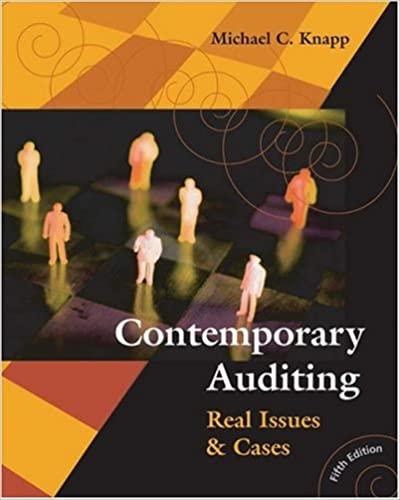In the spring of 2000, the Council or governing body of the American Institute of Certified Public
Question:
In the spring of 2000, the Council or governing body of the American Institute of Certified Public Accountants (AICPA) met to discuss two strategic initiatives. \({ }^{1}\) If implemented, the initiatives would have far-reaching implications for the public accounting profession. Barry Melancon, the AICPA's president and chief executive officer (CEO), and Robert Elliott, chairperson of the AICPA's board of directors, led the discussion of these proposals. The first initiative involved the creation of a "vertical portal" on the World Wide Web. This portal would be a stand-alone, for-profit business operated independently of the AICPA that would provide AICPA members with online access to all other members, to the AICPA's administrative units, and to businesses linked to the Internet. The portal would function similar to the hundreds of electronic B2B (business-to-business) marketplaces created during the late 1990s to serve the needs of a wide range of industries such as industrial chemicals, banking, food service, and automobile manufacturing.
The creation of an international professional designation that would complement the CPA credential was the second strategic initiative discussed by the AICPA Council during its spring 2000 meeting. National accountancy bodies around the globe, including the AICPA, would administer this new credential that would be awarded to CPAs and other individuals who passed a rigorous examination demonstrating that they qualified as "multi-disciplinary business advisers and strategic thinkers."2 Initially referred to as "XYZ," the new professional designation was intended to help existing CPAs strengthen their credibility as general business consultants, which would allow them to gain an increased share of the expanding market for business consulting services worldwide. Elliott, among the leading supporters of the proposed credential, reported that research funded by the AICPA documented the need for a professional business "credential that is global and that signifies broad understanding of business operations." \({ }^{3}\) That same research suggested that if the world's accountancy profession did not act quickly to establish this new designation, some other professional group would do so and garner the economic benefits and prestige for their own members.
Both of these ambitious proposals were products of the CPA Vision Project that the AICPA initiated in the mid-1990s. This project was intended to identify the key opportunities that the global business environment would offer CPAs in coming years and to develop specific initiatives allowing CPAs to capitalize on those opportunities. Despite an 18 -month, multimillion-dollar marketing campaign by the AICPA, the organization's membership rejected the XYZ proposal. In a nationwide vote in late 2001, AICPA members voted by a two-to-one margin not to create the new professional designation.
In June 2001, six months before the defeat of the XYZ proposal, the AICPA's portal concept became a reality when the organization's management team launched CPA2Biz.com. Why did the portal concept "fly" while the XYZ project floundered? Many disgruntled CPAs maintained that one factor alone was responsible for the different outcomes for these two revolutionary and controversial initiatives proposed by the AICPA's leadership. Unlike the XYZ proposal, the AICPA's rank-and-file members were not given the opportunity to vote on the portal initiative. Instead, the decision to establish the online portal was made by the AICPA's top officials and approved by the AICPA Council.
WЕBMD ... WEBCPA
A special committee of the AICPA board of directors oversaw the development of the accounting portal concept in late 1999 and early 2000. On the recommendation of Barry Melancon, that committee retained Brett Prager, a specialist in e-commerce and a partner in a venture capital firm, to serve as the principal architect and strategic advisor for the project. Prager had raised \(\$ 50\) million of capital to create Integrated Professional Services, a firm whose principal purpose was to help attorneys and CPAs build multi-disciplinary professional practices. Despite the fact that the firm never became viable, Melancon believed that Prager's experience with that venture and his background in e-commerce made him the individual best suited to organize the accounting profession's new online portal.
In an interview in early 2001, Prager explained that the key premise underlying the portal project was that the public accounting profession could create a significant new source of revenue for CPAs by helping them "crack the code" of the enormous small business market. A "small business" is generally defined as a company that has under \(\$ 100\) million in annual revenues or fewer than \(500 \mathrm{em}-\) ployees. There are approximately 25 million individual businesses in the United States alone that meet one of those criteria.......
QUESTIONS
1. Do you believe the decision by the AICPA's board of directors to offer Barry Melancon the opportunity to invest in CPA2Biz, Inc., was an "ethical" decision? Why or why not? Do you believe that Melancon's decision to accept thal offer was "ethical"? Again, defend your answer.
2. Was the decision by the AICPA's leadership not to submit the portal proposal to a vote of the rank-and-file members appropriate? Was that decision ethical?
3. Should different standards or criteria be used to evaluate the ethical (unethical) conduct of an organization versus an individual? Explain.
4. Do you believe that BDO Seidman was justified in filing a lawsuit against the AICPA? Why or why not?
5. What ethical issues, in addition to those mentioned explicitly in this case, are posed by CPAs using CPA2Biz.com as a tool to market products and services to their clients? List and briefly explain these additional issues.
Step by Step Answer:

Contemporary Auditing Real Issues And Cases
ISBN: 9780324188349
5th Edition
Authors: Michael C. Knapp, Loreen Knapp





